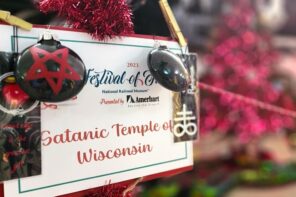Once in a while, an item crosses my inbox that offers a salutary reminder that indigenous peoples in the United States continue to work and negotiate for the free exercise of their religions.
Last Friday, a federal appeals court in Austin ruled that a 5-year-old Lipan Apache boy should be allowed to wear his long hair in two braids on the outside of his shirt as an expression of his religious beliefs. Administrators for the Needville, Texas Independent School District had told the boy and his parents that wearing the braids was a violation of school dress and grooming policy, but suggested that as an alternative the boy might wear the braids under his shirt or his 13-inch-long hair in a bun. The court protected the boy’s right to wear his hair in plain sight in keeping with his beliefs.
And this week, the Comanche Nation finalized arrangements with the Federal Fish and Wildlife Service to open a repository for sacred feathers used in Native religious ceremonies, especially by nations of the Southern Plains. Sia: The Comanche Nation Ethno-Ornithological Initiative will be the first sanctioned repository for non-eagle feathers (including hawk, duck, and songbird feathers) ethically harvested and distributed to enrolled tribal members.
It has only been about three decades since American Indian religious freedoms were guaranteed under the American Indian Religious Freedom Act of 1978. Many indigenous religious practices including dances had been outlawed during the nineteenth and early twentieth centuries; access to sacred sites, conduct of ceremonies, and possession of sacred items including feathers and bones had also been disrupted or prevented by the federal government.


